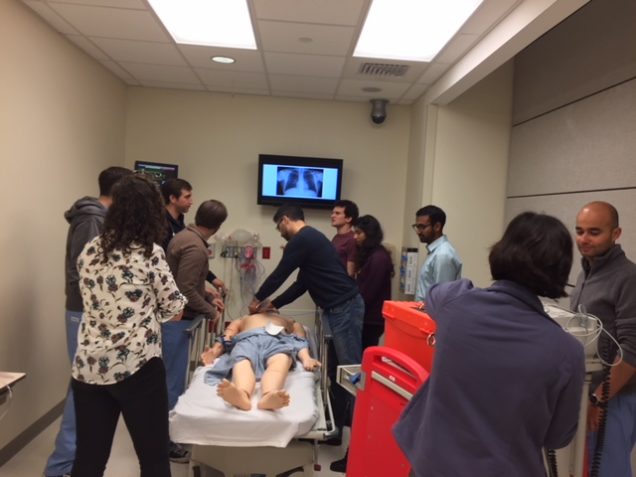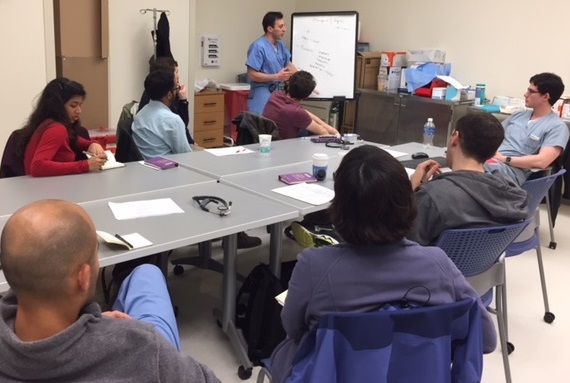Curriculum


The curriculum consists of a combination of didactic, small group problem-based learning, and simulation experiences to address learning objectives as stated above. The curriculum has been informed by a needs assessment survey offered to all MSIVs pursuing a residency in Internal Medicine and all interns in the Boston Medical Center Internal Medicine Residency Program in the 2015-16 Academic Year.
The following content is taught in small-group, classroom settings:
- Acute medical conditions: hyperglycemia, electrolyte and acid-base disturbances, pain management, non-cardiac chest pain, end of life care
- Core intern skills: presenting a new patient, responding to pages, calling consults, handing off or discharging patients, wellness
- Advanced communication skills: bad news, goals of care, medical errors, decision making capacity
- Student to faculty ratio for these activities is approximately 10:1
The following content is taught in the simulation center:
- Acute medical conditions
- Procedures: central and intravenous line placement, thoracentesis, paracentesis, arterial puncture, and lumbar puncture
- Student to faculty ratio for these activities is approximately 5:1
Students are expected to carry a pager and field mock pages (expected 4 total) on common Internal Medicine clinical scenarios outside of the classroom, between the hours of 7a-10p Monday through Friday. There are no weekend hours. There is no direct patient contact.
Case-Based Simulation Sessions
These sessions are designed to allow students to receive hands-on experience in dealing with acutely decompensating patients in a variety of clinical scenarios. The goal of each session is to provide hands on experience with a specific clinical topic, but also to allow practice in managing team dynamics in critical care scenario. Students will participate as a team, with between 2 to 10 students participating in each case. After each simulated case, students debrief with facilitators to discuss the topics presented in the case more in depth. As time allows, after the initial discussion, additional cases are run, with different students leading each case.